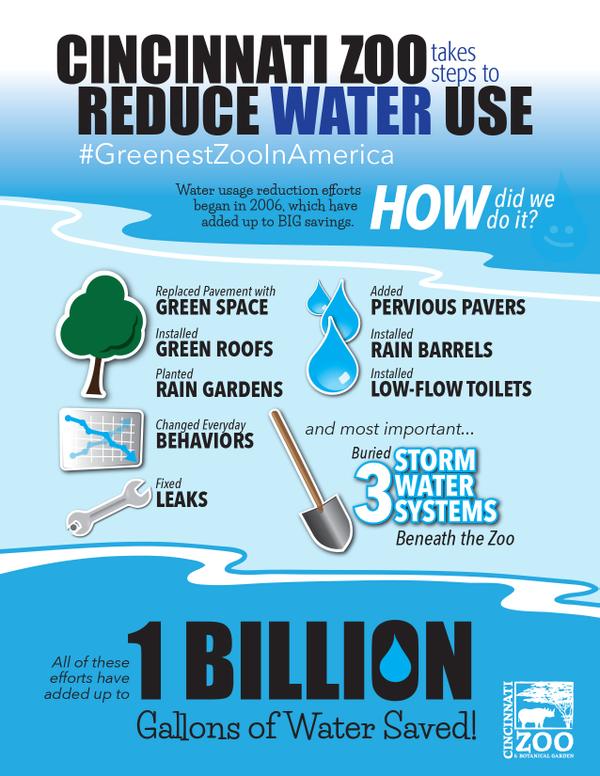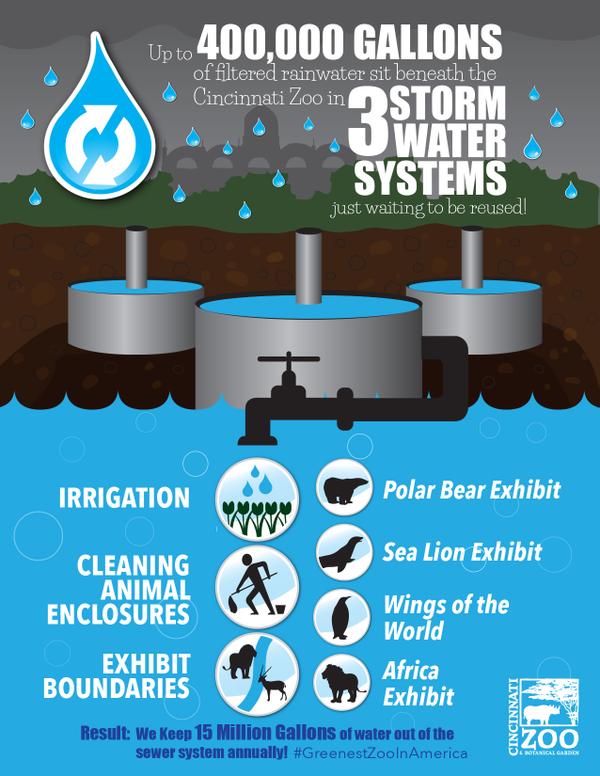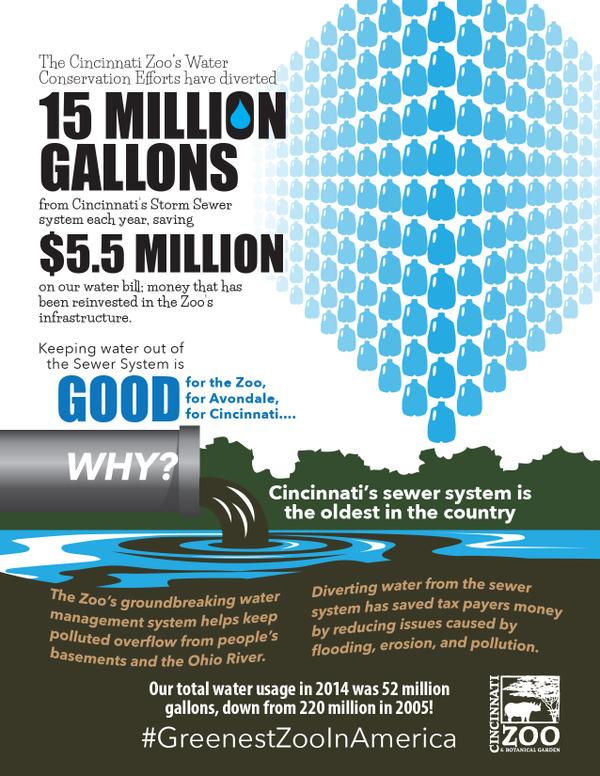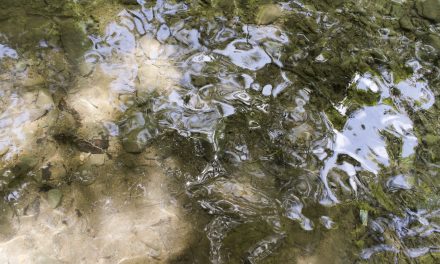Infographics by the Cincinnati Zoo & Botanical Garden show how the zoo has saved one billion gal. of water as well as $5.5 million on its water bills. The zoo also is keeping 15 million gal. of stormwater out of the sewer system annually.


 On April 22, the Cincinnati Zoo & Botanical Garden announced that it has saved 1 billion gal of water (3.8 million m3) ― enough to fulfill the indoor and outdoor water demands of 10,000 households for a year— since 2006 when it launched a major initiative to reduce water use.
On April 22, the Cincinnati Zoo & Botanical Garden announced that it has saved 1 billion gal of water (3.8 million m3) ― enough to fulfill the indoor and outdoor water demands of 10,000 households for a year— since 2006 when it launched a major initiative to reduce water use.
By aggressively fixing leaks in exhibit pools, installing low-flow faucets and fixtures, upgrading filtration systems, and changing everyday behaviors, the zoo brought its 2005 water demand from 833,000 m3 (220 million gal) to 280,000 m3 (74 million gal) by the end of 2012 and used even less, 197,000 m3 (52 million gal), last year.
Water conservation has saved the zoo $5.5 million on its water bills — money that is being reinvested in the zoo’s infrastructure.
Other water conservation efforts that help reduce runoff at the zoo include the installation of pervious pavement, hectares of green space, green roofs, and rain gardens.
Additionally, up to 1500 m3 (400,000 gal) of filtered rainwater sits below the zoo in specially-designed stormwater systems. This water is used to irrigate the zoo’s botanical garden, clean animal enclosures, provide exhibit boundaries, and fill pools for polar bears, sea lions, penguins, and other animals.
The largest stormwater tanks were installed under the zoo’s Africa exhibit when it was built two years ago and provide all the water used in the exhibit. The waterfalls, moats and streams that flow through Painted Dog Valley, the lion and cheetah exhibits, and eventually, the hippopotamus pool are 100% harvested rainwater.
The Metropolitan Sewer District of Greater Cincinnati fully funded the tanks under the Africa exhibit in an effort to reduce stormwater runoff. The tanks keep 15 million gal (57,000 m3) of water out of Cincinnati’s combined sewer system annually. Diverting water from the sewer system has saved taxpayers money by reducing expenses caused by flooding, erosion, and pollution. Eventually the zoo hopes to get 100% of its property off of Cincinnati’s stormwater grid.




